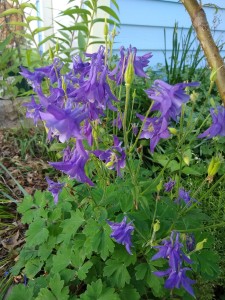 While we are all getting cozy in our homes, drinking hot toddies and planning for the upcoming winter holidays, what are our annual, perennial and biennial plants doing? Looking out at the garden or container array, you might be tempted to say “dying”, and you would be right, but there is actually a lot more going on.
While we are all getting cozy in our homes, drinking hot toddies and planning for the upcoming winter holidays, what are our annual, perennial and biennial plants doing? Looking out at the garden or container array, you might be tempted to say “dying”, and you would be right, but there is actually a lot more going on.
If you purchased your ornamental plants at the garden center, nursery or big-box store, they spent their earliest moments in climate controlled greenhouses, being carefully prepared to be at their peak during the spring and early summer buying season. Once installed in beds, borders or containers, annuals and reblooming perennials went about the business of pumping out flowers as often as genetics and climate would allow. Biennials and once-blooming perennials put on splendid floral displays at the right time in the growing season and continued to photosynthesize afterwards.
But now, all that activity is almost over—almost. After the last flower petals have dropped, plants fulfill their biological imperative by setting seed and dispersing it. Fruits and vegetables conceal those seeds in their edible products, to be consumed by mammals and birds and dispersed along with their bodily waste. Of course we humans generally use indoor plumbing to circumvent the natural dispersal process, but the vegetable and fruiting plants have no idea about that.
Ornamentals also do their best to ensure that their seeds drop to the ground. Some plants, like hardy geraniums, do it actively by producing seed pods that split open dramatically and hurl the seeds outwards from the parent. Others, like zinnias, are more passive and allow the seeds to drop to the ground.
The point to all this is that you can mimic those plants and sow the seeds of next year’s garden in the fall. The logic of this is easy to understand. If cosmos seeds drop to the ground, they don’t begin the growth cycle right away. Instead they undergo vernalization, a process during which the cold temperatures of winter actually prepare the seed for active germination when the time is right.
If you are like me and buy seed packets in the spring in the hopes of growing your own ornamentals, you might have leftover seeds that never left the seed packets. Guilt about that—or anything else—should never be part of the gardener’s mindset, so cast it aside and cast those leftover seeds into the garden. This is a much better solution than throwing them away, composting them or waiting until next spring in the hopes that some will germinate.
Many of the most popular annuals and perennials respond well to fall planting, including pansies, cosmos, larkspur, nigella, poppies, snapdragons, stocks, wallflowers and nasturtium. Morning glories, with their hard seedcoats, relish the treatment. Among perennials and biennials, foxglove, delphiniums and milkweed also respond well. If you are not sure about whether those leftover seeds will germinate as the result of vernalization, sow them and see. You really have very little to lose.
You can plant those seeds as you put in the spring-flowering bulbs, serving two purposes at once. You will give the seeds a chance at flowering next year, and in the process their leaves will help cover up the daffodil, tulip and hyacinth foliage as they finish the photosynthesis process and wither away.
If you have no leftover ornamental seed packets, you can make life even easier by letting your flowering plants drop their own seeds. Some hybrid seeds are sterile and won’t do anything at all, but many of the old-fashioned flowers self-seed readily. In the spring when the sprouts appear, you can move or grub out the little plants that pop up in places where they are not welcome. They won’t have come to life in the luxurious environs of climate controlled greenhouses, but most will grow perfectly well. All seeds have genetic memory, but I guarantee that genetic memory does not include visions of commercial greenhouses.
If you are one of the tribe of tidy gardeners, you will certainly ignore these ideas. Your beds and borders are already pristine and only the stealthiest of self-sown seeds will violate the sanctity of a really tidy autumn bed.
Since I am not of that mindset, I will strew my leftover seeds. A little serendipity will be welcome in the garden when spring rolls around.
